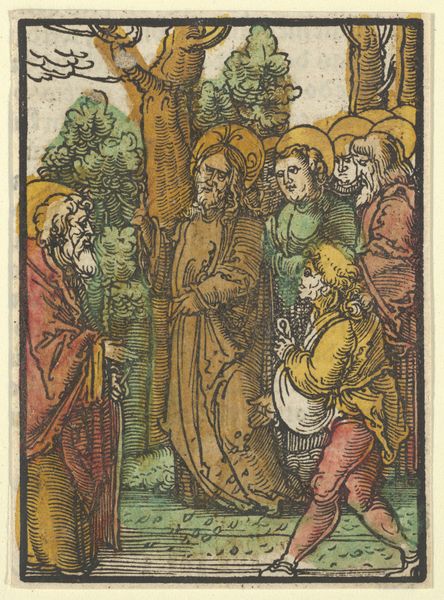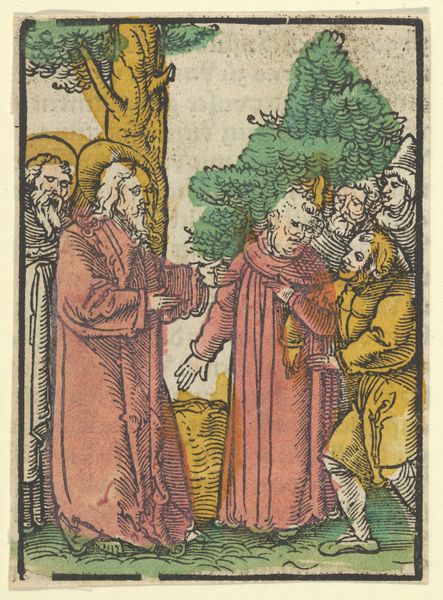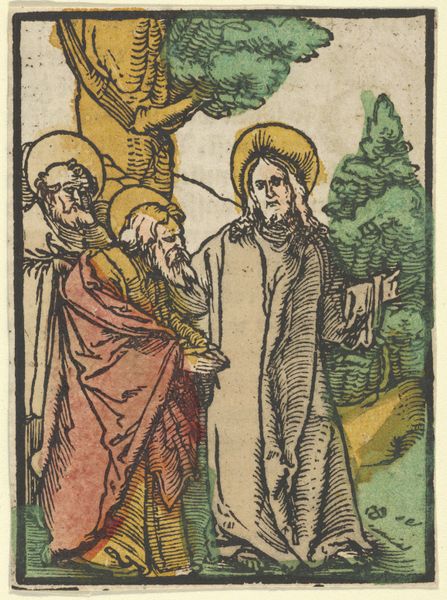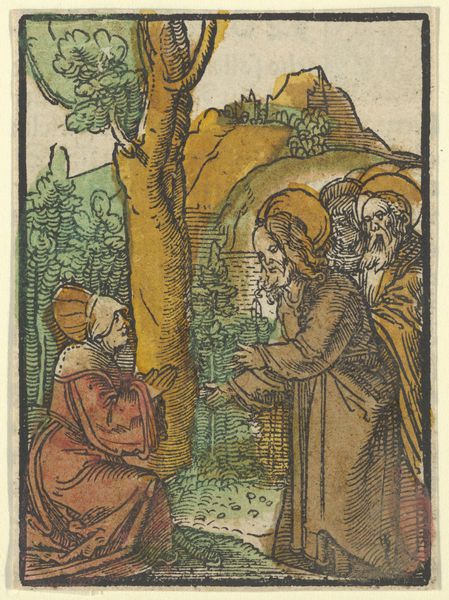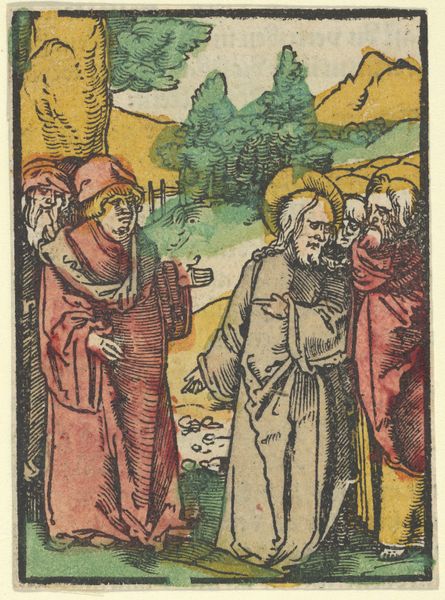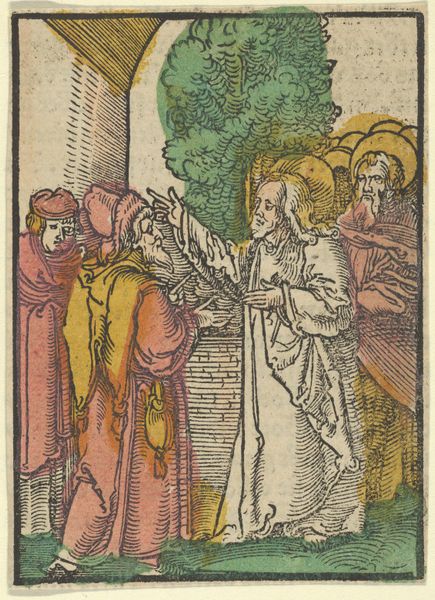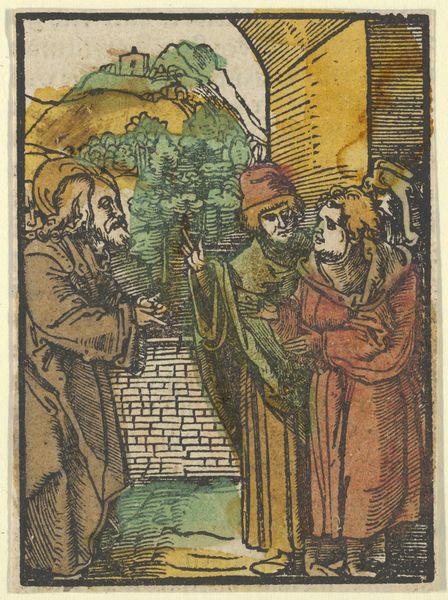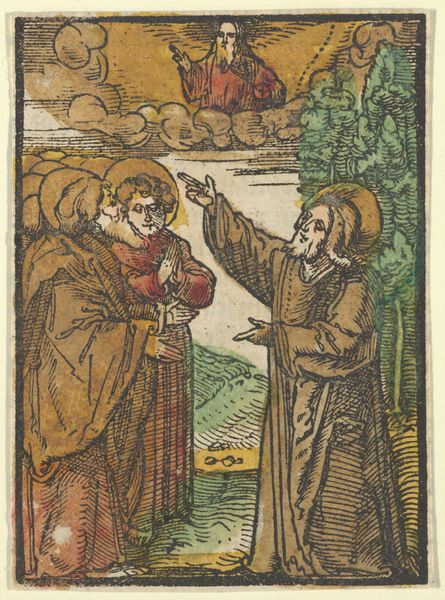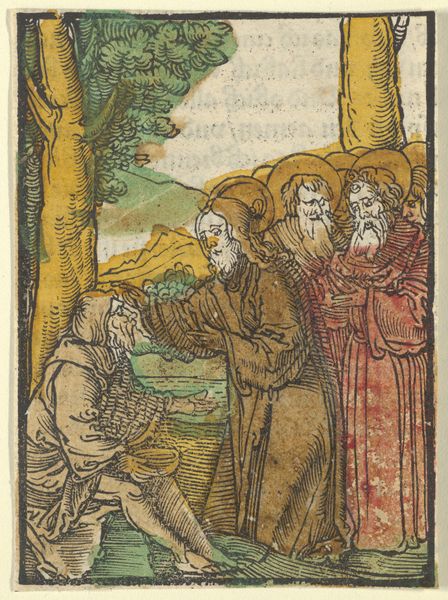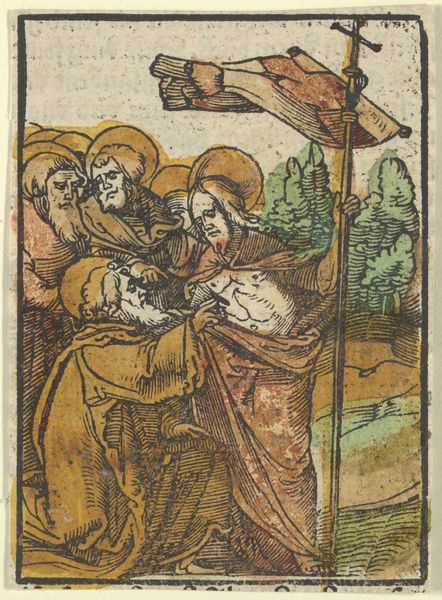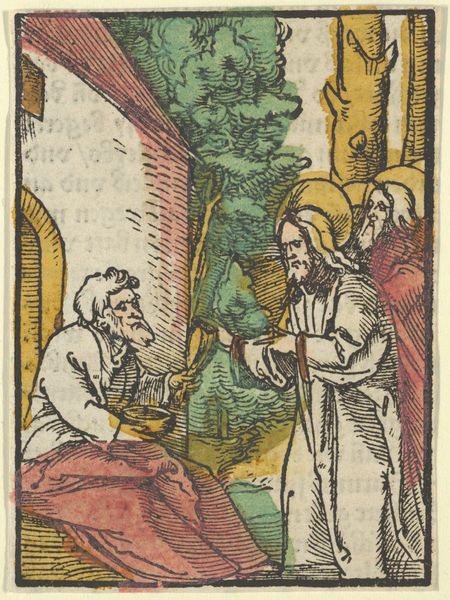
Christ and the Woman Issuing Blood, from Das Plenarium 1517
0:00
0:00
drawing, print, woodcut
#
drawing
# print
#
figuration
#
woodcut
#
history-painting
#
northern-renaissance
#
christ
Dimensions: Sheet: 3 11/16 × 2 11/16 in. (9.4 × 6.8 cm)
Copyright: Public Domain
Curator: This is a colored woodcut, made around 1517 by Hans Schäufelein. It's entitled "Christ and the Woman Issuing Blood, from Das Plenarium," and it’s now part of the collection here at the Metropolitan Museum. Editor: My immediate impression is one of striking emotional tension. The woman’s posture, combined with the crowd of figures at the left—it really evokes a sense of pleading desperation met with a detached sort of scrutiny. Curator: Right, it’s an interesting tension created with limited means. Given the woodcut process, we see Schäufelein relies on distinct, bold lines to delineate form and imbue the scene with its drama. We should consider this not just a fine art print, but also a widely accessible means of religious instruction. Editor: Absolutely, situating it within its socio-historical context, we see the story speaks to issues of faith, healing, and social exclusion. How a woman, suffering what was deemed a shameful ailment, challenges societal norms to seek direct divine intervention. I wonder what possibilities for contemporary discourse this work presents? Curator: Well, I am struck by the materiality here and by the collaborative labor behind it, it would have been part of a larger book, Das Plenarium, and surely involved workshop assistants contributing to the cutting of the block and perhaps the coloring after printing. It represents a collective making, not just Schäufelein's singular genius. Editor: That collaborative effort mirrors the community dynamics represented in the scene. Christ, surrounded by his followers, encountering someone at the margins, demanding recognition and dignity. It makes me think about marginalized bodies and agency. Curator: And the physicality of the woodcut itself speaks to that accessibility and dissemination of information, playing a vital role in spreading religious ideas to a broad audience during the Reformation. Consider its availability for both literate and non-literate populations, through image alone. Editor: Looking at this piece through that lens, it reframes our understanding of art's function. It becomes less about the unique artwork and more about social dialogues it engenders and the empowerment dynamics in faith and the vulnerable body. Curator: A fascinating tension we find embodied in the image as much as the woodblock used to produce it. Editor: Indeed. The image continues to inspire reflection centuries later.
Comments
No comments
Be the first to comment and join the conversation on the ultimate creative platform.
